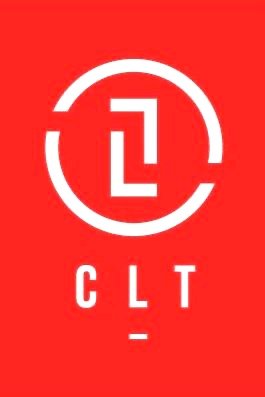How Many Scrum Masters does it take to Change a Light Bulb?
Yep – it's from the old joke about how many psychologists it takes to change a light bulb.
And the punchline remains the same: One but the light bulb has to *want* to change.
People attend Collaborative Leadership Team’s Certified ScrumMaster® (CSM®) courses hoping to learn to change their company. Or their Development Team members or even their leaders. And they get frustrated to learn it's not possible. These folks waste the learning opportunity hoping to learn to trick or control another person.
The only person that anyone can change is themselves.
Yes – Scrum and Agile approaches mean change. And that starts with every individual involved learning what those changes mean and then making a choice.
Once a group has made the choice to change this only happens by getting together and talking about the best way to do that. And still observe their goals, serve their customers, in the process.
How does this start? In Scrum the Scrum Master is the change agent who works as a neutral facilitator helping the people and the organization to change for the better. A Scrum Master needs people skills, people skills and more people skills! If a Scrum Master is in need of improving people skills, they may need to look outside of the Scrum framework for ideas.
Collaborative Leadership Team partners with psychologist Dr. Harvey Robbins. His book, “The New Why Teams Don’t Work”, has practical advice on identifying our own behavioral style and building plans to work better with others.
This isn't identifying personality types. It doesn’t mean ignoring personalities. It means that personalities are not always revealed in the way we behave. The way we behave with one another affects our performance (or not) as a team and as an organization.
To learn more visit our Ignite Agility podcast and learn from Dr. Harvey Robbins
Check out our upcoming course opportunities here!
Collaborative Leadership Team to offer LKU Certified Kanban Training in Minnesota
MINNEAPOLIS (PRWEB) MARCH 06, 2019
Kanban is a method of organizing and managing professional services work. It uses Lean concepts such as limiting work in progress to improve results. A Kanban system is means of limiting work-in-progress and signaling when capacity is available to start new work. This is known as a “pull system.”
"CoLeadTeam continues its commitment to helping the amazing organizations of the Twin Cities and the Midwest deal with the barrage of challenges to their survival” said Angela Johnson, Founder and CEO of CoLeadTeam. “Change is the only constant. The organizations that can learn and adapt the fastest, will be the ones that succeed. Working differently takes a combination of Training & Coaching. Organizations have smart, knowledgeable employees that need the time and the training to embrace and overcome the obstacles that this business climate will constantly throw at them."
The series of 3 classes build upon one another from team level work through multiple workstreams allowing an organization to progress as their circumstances dictate. COO and Product Owner, Teri Bylander-Pinke shared, “Kanban provides a lower barrier to entry for some organizations looking to improve their agility but who are unable to make required structural changes that Agile frameworks such as Scrum require. Offering Kanban will enable CoLeadTeam to help a wider variety of organizations.”
Accredited Kanban Trainer (AKT), Rand Eaton, adds “The Kanban method is an alternate path to Agility that organizations can use to balance their demand with their capability. Companies begin to see their organizations as workstreams providing value to their customers instead of have products that impact each other.”
To learn more about these programs, please contact us at: info@coleadteam.com
About Collaborative Leadership Team: CoLeadTeam provides the unique combination of Certified Training, Coaching, Customized Training, Assessments, and Ignite AgilityTM plans. Our core values are focused on optimizing Individuals and Teams, improving their ability to deliver valuable, working product. Agile & Scrum is useful for much more than software. We have experience using this for software, hardware, services, manufacturing, house flipping, and strategic decision making. For more information on our service offerings, please visit our website https://www.collaborativeleadershipteam.com.
Contact Collaborative Leadership Team:
Teri Bylander-Pinke
Chief Operations Officer
Collaborative Leadership Team
Teri@CoLeadTeam.com
https://www.collaborativeleadershipteam.com/
Coaching "Up" - New ScrumMaster techniques
A common theme we hear among newly minted Certified ScrumMasters (CSMs) is their surprise that “coaching up” in the organization is part of their job. The official Scrum Guide (https://scrumguides.org/) is clear that the Scrum Master is a servant leader not only to the Development Team and Product Owner but also to the Organization.
What follows is usually the CSM gulping, nervously shifting their gaze or sighing. When we ask them what’s wrong, they say things like “But I don’t know how to talk to a CIO, CEO, VP (fill in the executive blank).” “They won’t listen to me, I’m supposed to be neutral.”
The fact that the Scrum Master is neutral makes them the perfect person to talk to the organization’s leaders about the use of Scrum or Agile as a way to do work. The Scrum Master also escalates impediments to the Scrum Team’s success on their behalf within the organization.
Here are a few tips and reminders that may help:
· Exhibit Courage: One of the Scrum values is Courage. Scrum Masters may need to summon up the courage to have necessary conversations with leaders. Remember the organization’s leaders are people too and why wouldn’t they want to know about something that is impeding a Scrum Team’s ability to deliver value to the organization’s customers?
· Don’t Overuse the Scrummy Language: Scrum is far easier done than said. Leaders may or may not be versed in the vocabulary in the framework. Instead of saying something like - “The Development Team’s impediment to meeting their Sprint Goal is the company process” you could start with a question “If our procurement process is holding up the release of New Product X would you want to know about it?” Any leader vested in the organization’s success is sure to answer “Yes”. Follow with “Here are the details of exactly how that process is preventing our people from delivering that value as we speak.”
· Be Brief in Messaging: A mistake many Scrum Masters make is approaching a leader in the same way they might approach a Development Team Member, a Product Owner or Subject Matter Expert. Depending on the level of leadership, sometimes they need items “bulleted” or rolled up. Come prepared to deliver your message in a few, short statements. If it makes more sense to ask a question as described in the previous tip and adapt accordingly that works also.
Collaborative Leadership Team recently joined forces with Michael Nir on this topic of how to influence when you do not have authority. Michael is a nationally recognized speaker and author who helps people learn how to have these conversations. Listen for Free to tips from Michael on our Ignite AgilityTM podcast.
To check out our upcoming course opportunities, head to our course schedule!
Sprint Retrospective: Process Improvement not a Report for Management
A common impediment we hear in #CSM classes is whether to share the actions and outcomes from the Sprint Retrospective outside of the Scrum Team (product owner, scrum master, development team). When we ask for more clarification students make comments such as “the Senior Leaders want to know that we’re really working” or “Senior Leadership wants to know that we are improving” and also “Senior Leadership wants to make sure we’re doing work”.
A great question for the Scrum Master to ask those Senior Leaders is “What problem are we trying to solve by sharing Sprint Retrospective actions and outcomes?”. It may also be helpful to ask those same leaders what information they need and take advantage of that teachable moment to let them know the appropriate place to get product information such as from Information Radiators and Task Boards. Are the leaders regularly attending the Sprint Reviews to see working product and to get current information on the product? If they are not attending, why is this the case? And most importantly, do leaders understand that the Product Owner is the one to go to for information on the state of the product.
Principle #5 in the Agile Manifest states: Build projects around motivated individuals. Give them the environment and support they need and trust them to get the job done.
To be most effective, there needs to be psychological safety in the Sprint Retrospective. How likely is that to occur if the Scrum Team learns that the Scrum Master publishes a report or meeting minutes of what gets discussed to senior leadership? If trust is the issue the Scrum Master may have some work to do with leaders and the development team to build trust.
The intent of a Sprint Retrospective is for the Scrum Team to agree on 1, no more than 2, process improvements within their control to implement in the upcoming Sprint. It's up to the PO if it's for them to enact or a member of the team to champion the improvement if it’s for the development team. There's no "minutes" or log or output or any of that because it's a Sprint Retro. The 1 item is implemented. If it’s really necessary to have a reminder something can be put on the Task Board for the upcoming Sprint.
If the Scrum Team gets to the next retro and determines that the process improvement wasn't really helpful, they can inspect and adapt and try something else. If it had the desired effect, it can be determined to keep the process improvement permanently and move on to brainstorming another improvement that's relevant for that current Sprint.
If you’d like to learn more about effective Scrum and are in the #Houston area, join us for our #GuaranteedtoRun #CSM course. To register click here: CSM Jan 28-29 Houston, TX





